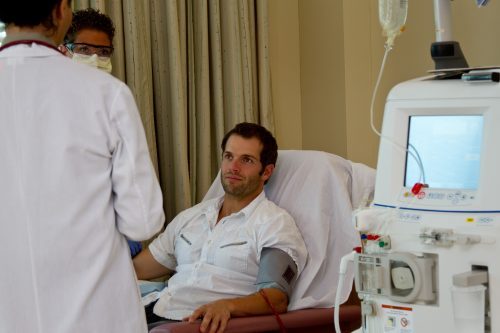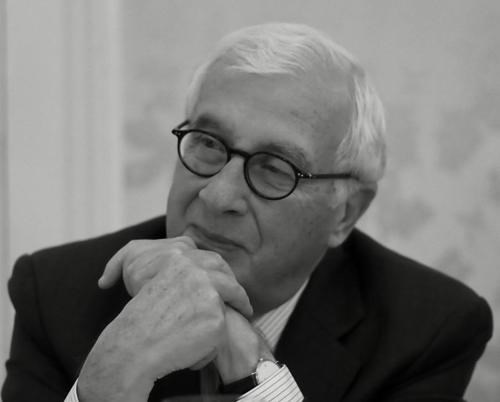
Nearly one-half of patients >75 years of age who initiate dialysis are dead within 6 months (almost one-half are dead within 1 month of initiation).1 These patients have a terminal illness. Among those who survive, withdrawal from dialysis occurs in only about 30%, and many patients suffer on dialysis with failure to thrive, problems with activities of daily living, and multiple co-morbidities.1
Eric Cassel, MD, in his landmark contribution published almost 30 years ago in the New England Journal of Medicine2 wrote that suffering may occur both during the course of a disease and from the treatment of the disease. In the case of elderly dialysis patients, suffering occurs before and after dialysis is initiated.
Says Cassel: “Patients sometimes report suffering when one does not expect it, or do not report suffering when one does expect it…a person can suffer enormously at the distress of another, especially a loved one.”
One strategy to help patients and families manage end-of-life is to offer them hospice care. Some think that hospice care is only about keeping patients comfortable with pain relief. While pain control is important, hospice care provides home visits by the care team, including a physician, nurse, medical social worker, home-health aide, and chaplain/spiritual adviser. Hospice care allows access to special services, such as physical and occupational therapy, and dietary counseling; hospice also helps with modifying the home through installation of equipment to enhance mobility and prevent falls.
In a cross-sectional study of more than 770,000 Medicare beneficiaries3, only 20% of maintenance hemodialysis patients enroll in hospice and for just a few days. This is about 50% less than the general population. The under-utilization of hospice care may be because Medicare restricts coverage for hospice care until the patient discontinues disease-modifying treatment such as dialysis, and when the patient is declared by their treating physician to have less than 6 months to live.
With an elderly dialysis patient, treatment with dialysis is neither curative nor disease-modifying; rather it is more in the realm of supportive therapy. In addition, compared with younger patients, the mortality of elderly dialysis patients is very high—more than half die within 6 months.
The Veterans Administration (VA), one of the largest health systems in the United States, spends hundreds of billions of dollars of taxpayers money. Unlike Medicare, the VA pays for hospice care for dialysis patients regardless of the patient withdrawing or continuing dialysis.
In a recent VA study of the effect of hospice care in dialysis patients4, Richards et al. looked at quality of care survey data among patients who withdrew versus those who continued dialysis. They reported that withdrawal from dialysis was associated with a higher quality of care perceived by family members. Patients who discontinued dialysis received hospice care three-times (58% versus 18%) more frequently than those who continued with dialysis. Family members rated the quality of care 20% higher when hospice care was provided.
In an accompanying editorial5 to the Richards paper, Tate and Matlock raise the issue of what it means to have a “good death” using a social justice framework. In their reckoning, little consideration is given to allowing patients to define what a good death means to them. Medicare restrictions prevent dialysis patients to opt for hospice. Rather, the choice confronting elderly patients—if presented this choice—is of discontinuing with hospice and then dying, or continuing with dialysis and suffering without hospice. A Faustian bargain, indeed.
In the Richards study, patients who stopped dialysis were less likely to be black or live in the South Atlantic region. Tate and Matlock make a social justice argument for providing all patients choice: “Clinicians must inform patients of their options and respect their decisions, and we must ensure that those options are available to them.”
My take on this is that Medicare should remove the restriction to hospice care for elderly dialysis patients. The largest public health system in the US provides no such limitation. Its difficult enough surviving as an elderly dialysis patient, but patients ought to be offered hospice as well as other services to make life more bearable.
References
- Wachterman MW, O’Hare AM, Rahman OK, et al. One-year mortality after dialysis initiation among older adults. JAMA Intern Med. 2019 Jul 1;179(7):987-990. doi: 10.1001/jamainternmed.2019.0125.
- Cassel EJ. The nature of suffering and the goals of medicine. N Engl J Med. 1982 Mar 18;306(11):639-45. PubMed PMID: 7057823.
- Wachterman MW, Hailpern SM, Keating NL, Kurella Tamura M, O’Hare AM. Association between hospice length of stay, health care utilization, and Medicare costs at the end of life among patients who received maintenance hemodialysis. JAMA Intern Med. 2018 Jun 1;178(6):792-799. doi: 10.1001/jamainternmed.2018.0256.
- Richards CA, Hebert PL, Liu CF, et al. Association of family ratings of quality of end-of-life care with stopping dialysis treatment and receipt of hospice services. JAMA Netw Open. 2019 Oct 2;2(10):e1913115. doi: 10.1001/jamanetworkopen.2019.13115.
- Tate CE, Matlock DD. Stopping dialysis, good deaths, and social justice. JAMA Netw Open. 2019 Oct 2;2(10):e1913110. doi: 10.1001/jamanetworkopen.2019.13110.







 © 2025 Mashup Media, LLC, a Formedics Property. All Rights Reserved.
© 2025 Mashup Media, LLC, a Formedics Property. All Rights Reserved.